Cataracts are an eye disease that becomes more common as we age. Including those with mild symptoms, it affects about 50% of people in their 50s, more than 80% of people in their 70s, and almost all people in their 80s and older get it. Japan is an aging society. The current situation is that it can affect anyone, including yourself or someone close to you.
This page explains the causes of cataracts, timing of treatment, treatment methods (FLACS), prevention methods, etc.
table of contents
白内障の原因・症状・治療方法・費用・手術について
What is cataract?
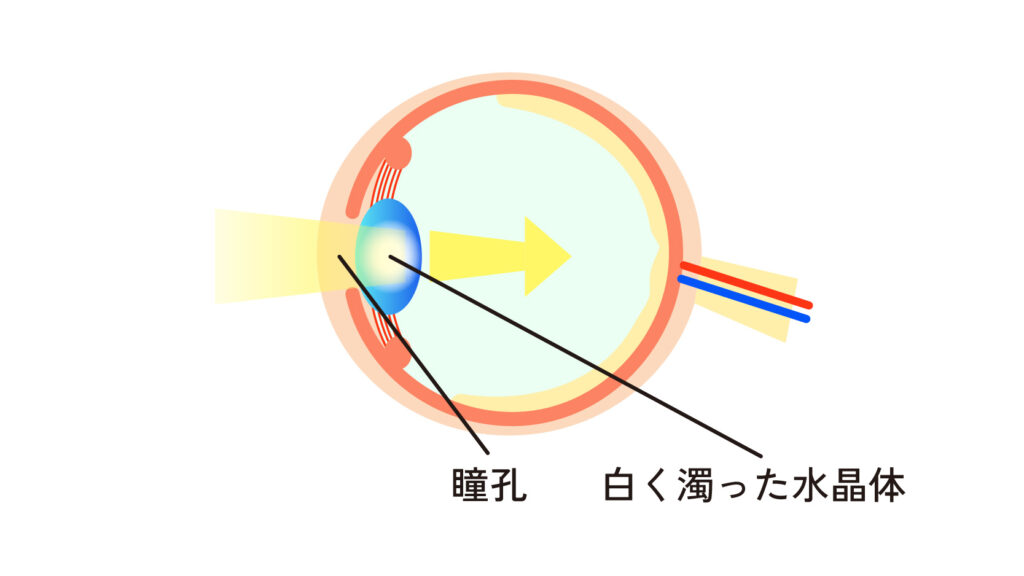
Cataracts cause vision loss due to clouding of the lens in the eye.
If it does not interfere with your daily life, eye drops can slow the progression of cataracts. These drugs only slow the rate at which the lens becomes cloudy; they do not improve symptoms or restore vision.
If the cataract has progressed to the point where you feel inconvenienced in your daily life, surgery may be performed. At our clinic, cataract surgery is performed by ophthalmologists with extensive surgical experience.
Since the incision is small and there is no hospitalization, the procedure can be performed without disrupting the rhythm of life and with less financial burden.
If you require hospitalization due to your general condition, we will introduce you to a hospital with inpatient facilities.
Cataract surgery at our hospital
The cataract surgery we use at our hospital is small incision cataract surgery with an incision width of 2.4 mm.
There are also intraocular lenses for astigmatism and multifocal intraocular lenses that can reduce presbyopia, and although the focus cannot be adjusted, they can focus at multiple distances and are used as bifocal lenses.
Image of how cataracts look
[Looks white and hazy]

[Appears to be hazy]
![[Appears to be hazy]](https://mieru-mieru.en.m17n.net/wp-content/uploads/cataracts-img-2-2.jpg)
When you develop cataracts, your vision becomes different from when you are healthy. Specifically, these include:
- white and hazy
- Looks hazy
- I see things twice
- It looks blurry
- It's dazzling when I go outside
As the cataract progresses, the pupils may turn white and become unable to focus.
Causes of cataracts
Cataracts are caused by protein oxidation caused by aging, ultraviolet rays, and the effects of other diseases. The human body has degradative enzymes that break down abnormal and old proteins.
However, as we age, protein degrading enzymes stop working properly, making it easier to oxidize. This means that you are more likely to develop cataracts.
Cataracts are most common due to aging, but there are also cataracts caused by trauma, other diseases such as diabetes, atopic dermatitis, glaucoma attacks, high myopia, exposure to radiation or ultraviolet rays, long-term use of corticosteroids, There are various causes of cataracts, including congenital cataracts, so even if you are young, if you notice a decline in your vision, please consider seeing an ophthalmologist.
Timing of cataract treatment
If the cataract is still in its early stages, we will first prescribe eye drops.
However, although these eye drops can slow the progression of cataracts, they cannot completely cure them, so cataracts will gradually progress.
The time for surgery is when you are aware of the symptoms of cataract and want to treat it.
If you feel any discomfort, please contact us as soon as possible so that we can treat you at the right time.
General procedure for cataract day surgery
eye drops
You will be asked to start using eye drops 3 days before surgery.
Preoperative examination
Please arrive at the hospital 2 hours before the day of your surgery for a pre-operative examination.
Operating room entry
You will be admitted to the operating room.
FLACS treatment
Perform FLACS treatment.
lens insertion
Move the bed and insert the intraocular lens.
Go home
After the surgery, you will be able to wear an eye patch and go home. (The eyepatch will be removed at the clinic the next day)
Medical checkup
We will have a medical examination the next day. (Wear safety glasses after the medical examination)
Cataract surgery FLACS at our hospital
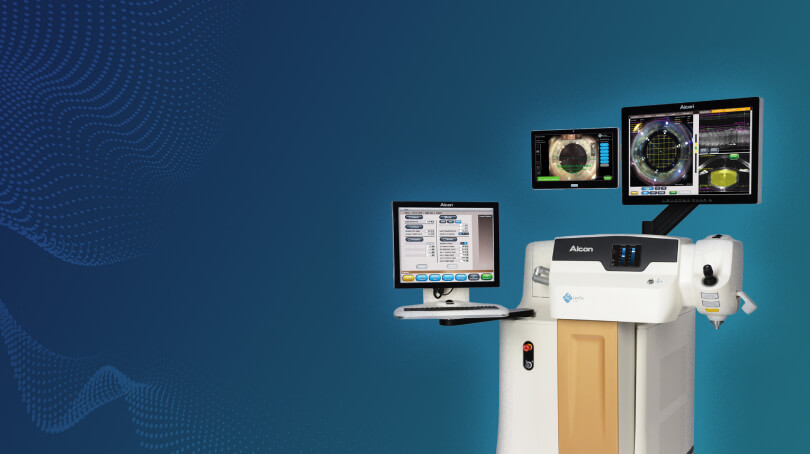
Laser cataract treatment FLACS (Femto Laser Assisted Cataract Surgery) uses femtosecond lasers and 3D analysis equipment to replace the process that used to depend on the skills of skilled surgeons with more precise and reproducible results that are close to the ideal. This is a promising treatment.
Using a laser, a perfectly circular anterior capsular incision is created at the appropriate location. By creating a perfectly circular anterior capsular incision, the intraocular lens can be fixed in an appropriate position, and it is expected that visual acuity that is close to what was expected before the surgery will be obtained.
By being able to perform the anterior capsular incision before incising the cornea, it is possible to handle difficult cases that require precise anterior capsular incision.
At our clinic, we perform FLACS treatment using LenSX manufactured by Nippon Alcon and provide good results.
Benefits of undergoing cataract surgery
Cataract surgery not only treats cataracts, but also has the following benefits:
Prevention of glaucoma attack
As cataracts progress, the lens swells and the opening (corner) for fluid called aqueous humor becomes narrower. As a result, the intraocular pressure increases and can cause a glaucoma attack, so early detection and early treatment of cataracts can prevent glaucoma attacks.
Easy to perform fundus examination
By restoring the cloudy lens to its clear state, it becomes easier to see into the back of the eye (fundus). This increases the possibility of early detection of eye diseases other than cataracts.
Possibility to reduce the degree of astigmatism
When the crystalline lens is restored to normal condition, the degree of light refraction can be adjusted, which may reduce the degree of nearsightedness, farsightedness, and astigmatism, and may eliminate the need for glasses.
Disadvantages of undergoing cataract surgery
Explain the disadvantages of cataracts.
Risk of endophthalmitis
Cataract surgery rarely carries the risk of endophthalmitis. Endophthalmitis is an infection that occurs inside the eye. The disease is rare, occurring in 1 in 2,000 to 3,000 cases, but when it develops, symptoms such as eye pain, redness, and blurred vision appear.
It is important to maintain good hygiene during and after surgery, to rest after surgery, and to apply eye drops.
Possibility of needing glasses
If you have a monofocal intraocular lens, you will need glasses to see outside of the focal point. Additionally, even if you use a multifocal intraocular lens, you may need glasses to see finer text or work in the dark.
Types of lenses used in cataract surgery
The crystalline lens functions to adjust the focus by refracting light by expanding and contracting. When the crystalline lens is removed for cataract surgery, the patient becomes severely farsighted. An artificial crystalline lens is then inserted in place of the removed crystalline lens. This artificial lens is called an intraocular lens.
At this time, a monofocal intraocular lens is generally inserted, but this lens always focuses at a fixed distance and cannot be adjusted. There is also a lens called a multifocal lens that has improved monofocal properties from this monofocal intraocular lens. Although the focus cannot be adjusted, it has multiple focal distances and is used as a bifocal lens.
Differences in lens types and vision
List of cataract lenses at our hospital
| name | pan optics | intensity | ミニウェルPROXA | fine vision | Odyssey | PureSee |
|---|---|---|---|---|---|---|
| lens image | 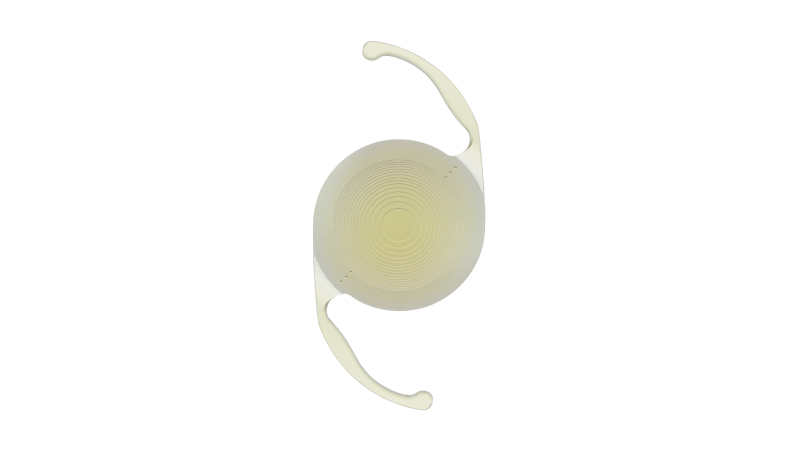 | 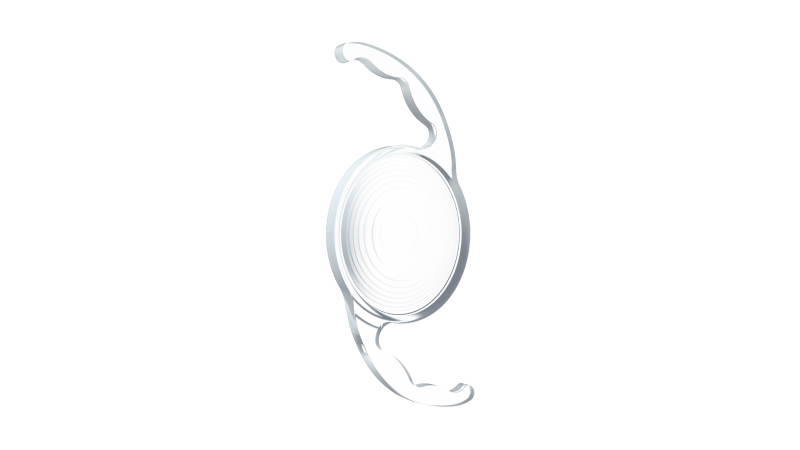 | 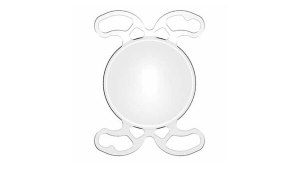 | 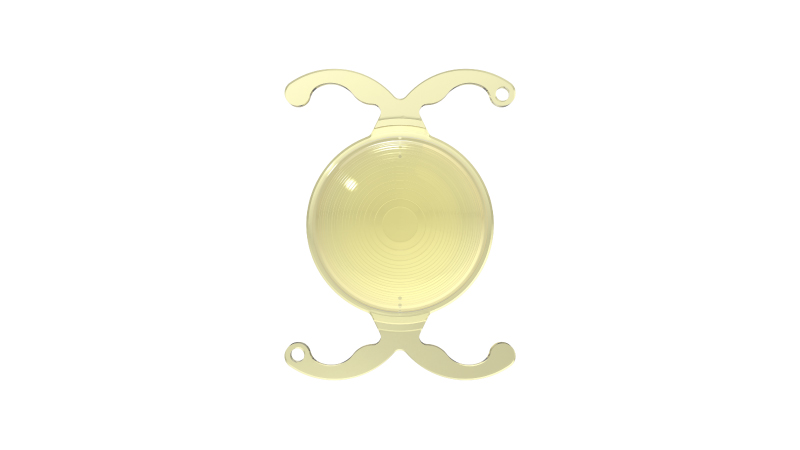 |  |  |
| focus | 3 focus | 5 focus | EDOF type | 3 focus | 連続焦点 | EDOF |
| focal distance | near, middle, far, far | near, near, middle, far, far | middle ~ far away | near, middle, far | near, middle, far | 近方から遠方 |
| astigmatism | can be | none | can be | none | can be | can be |
| Maker | Manufactured by Alocn (USA) | Manufactured by Hanita Lenses (Israel) | Manufactured by SIFI MedTech (Italy) | Manufactured by PhysIOL (Belgium) | Johnson & Johnson社製(アメリカ) | Johnson & Johnson社製(アメリカ) |
| night vision (Hello Glare) | can be | can be | almost none | can be | can be | can be |
| UV cut | 〇 | 〇 | 〇 | 〇 | 〇 | can be |
| blue light cut | 〇 | × | × | 〇 | △ | △ |
| admit | Domestic approval | THIS | THIS | THIS | Domestic approval | Domestic approval |
| cost | 550,000 ※乱視用は+5万 | 650,000 ※乱視用は+5万 | 70万 ※乱視用は+5万 | 600000 ※乱視用は+5万 | 600000 ※乱視用は+5万 | 600000 ※乱視用は+5万 |
| characteristic |
PanOptics is a trifocal intraocular lens developed by ALCON and approved for the first time in Japan in 2019. The camera is set to focus on three distances: far, intermediate, and near.
Because the lens has a 300-degree angle, it looks more natural than a bifocal lens. In addition, it is characterized by a vivid appearance due to the manufacturer's unique design. Although it is somewhat difficult to see at hand, the trifocal lens provides well-balanced vision, making it possible to live a comfortable lifestyle that does not require glasses in many situations of daily life, such as office work, watching TV, and driving. can. There is also a toric type for astigmatism, so it is recommended for those who wish to correct astigmatism.
|
Intensity Lens is the world's first 5-focal intraocular lens developed by Hanita Lenses in Israel for patients undergoing cataract surgery and presbyopia surgery.
. The difference from conventional bifocal and trifocal intraocular lenses is that it is now possible to adjust the focus at five focal points, including far, intermediate, and near, as well as far, intermediate, and near. It also uses the latest proprietary optical technology, DLU technology (Dynamic light utilization technology), which provides a brighter field of view than conventional diffractive bifocals or trifocals. In Japan, it has been available as a free medical treatment since September 2020.
|
Miniwell Ready Lens is a multifocal intraocular lens developed by Italian company SIFI, and is a new type of lens that is different from conventional diffractive and refractive intraocular lenses. Len
The optical structure of the lens utilizes the principle of spherical aberration, where refraction differs depending on the curve of the lens surface, resulting in a more natural viewing experience. While near vision is a little weak, its strength is that it focuses continuously from far to intermediate distances. In addition, there is very little halo glare, which is considered a disadvantage of conventional multifocal intraocular lenses, and there is no noticeable decrease in contrast. Therefore, it is suitable for people who often drive at night or who play sports. Basically, there is no problem with the naked eye, but reading glasses may be necessary.
|
FineVision is a trifocal diffractive multifocal intraocular lens released by PhysIOL of Belgium. Contrast, which was considered a disadvantage of conventional bifocal intraocular lenses
This is an epoch-making lens that eliminates the drop in Focus can be adjusted at three distances: far, intermediate, and near. It is also equipped with lenses for astigmatism, making it possible to treat cataracts and astigmatism at the same time. This will reduce the frequency of wearing glasses and contact lenses, allowing you to spend your time without your eyes. Although near vision is somewhat weak in dark places, good visibility can be ensured even at night. In 2023, it was approved by the Ministry of Health and Welfare as a "selective treatment."
|
TECNIS OdysseyはJohnson & Johnson社(アメリカ)最新モデルの回折型多焦点眼内レンズです。国内では2024年11月
より発売が開始。 遠方から近方まで連続的に焦点を結ぶように設計されている優れた視力が特徴で、従来品と比べてハロー・グレアが抑えられています。 回折構造がレンズの中心から外周まで入っており、昼夜を問わず高いコントラスト感度が得られる為、日常生活の多くのシーンで眼鏡を必要とせずに快適に過ごすことができます。同社の眼内レンズはホワイトニングやグリスニングも少なく、また乱視矯正可能なトーリックタイプもおすすめです。
|
TECNIS PureSeeはJohnson & Johnson社(アメリカ)最新モデルの焦点深度拡張型多焦点眼内レンズです。 国内では202
5年6月より発売が開始。 従来の多焦点眼内レンズとは異なった設計の全く新しい眼内レンズで、大きな長所は3つあります。 ①遠方から日常生活に必要な近方まで優れた視力が得られること。 ②単焦点眼内レンズと同等に高いコントラスト感度を持っていること。③ハロー・グレアがほとんどでないこと。 光を余すことなく有効に利用している為、より自然に、より鮮明な見え方を実現しております。 夜間運転される方や運動される方にも適しており、また乱視矯正のトーリックタイプもおすすめです。
|
*CE mark is a mark of conformity that is required when being marketed in both EU member countries and the European Economic Area (EEA).
cataract surgery cost
There are three types of costs for cataract surgery, depending on the type of lens and surgical method:
・Insurance coverage: Monofocal intraocular lens/cataract surgery (procedure)
・Selected therapy: Trifocal intraocular lens/cataract surgery (technique)
・Self-pay medical treatment: Multifocal intraocular lens/FLACS (laser cataract treatment)
Selective therapy is a system in which you pay for the specified lenses beyond what is covered by insurance, and it is a system that allows you to combine insurance treatment and self-pay treatment.
The cost range differs depending on the cost type, so we will guide you to the most suitable lens, taking into account the patient's needs and eye condition. Please feel free to contact us
[Single focus lens]
| project | Fee |
| Single vision lenses (covered by insurance) | Approximately 8,000~45,000 yen |
|---|---|
| Single vision lens - Laser cataract treatment FLACS - (free medical treatment) | Approximately 250,000 yen |
[Trifocal lens (selected treatment)]
| project | Fee |
| Surgery cost (covered by insurance) | Approximately 8,000~45,000 yen |
|---|---|
| Lens fee (free medical treatment) | 300,000 [no astigmatism] / 320,000 [with astigmatism] |
| Post-surgery checkup fee (covered by insurance) |
[Multifocal lenses (free medical treatment)]
| project | Fee |
| Laser + lens fee (free medical treatment) + surgery fee | 560,000~650,000 |
|---|---|
| Post-surgery checkup fee (free medical treatment) | 2,200 yen |

Equipment used in cataract treatment
In order to perform cataract treatment and surgery more safely and accurately, we use the latest equipment to perform examinations and surgeries.
ARGOS
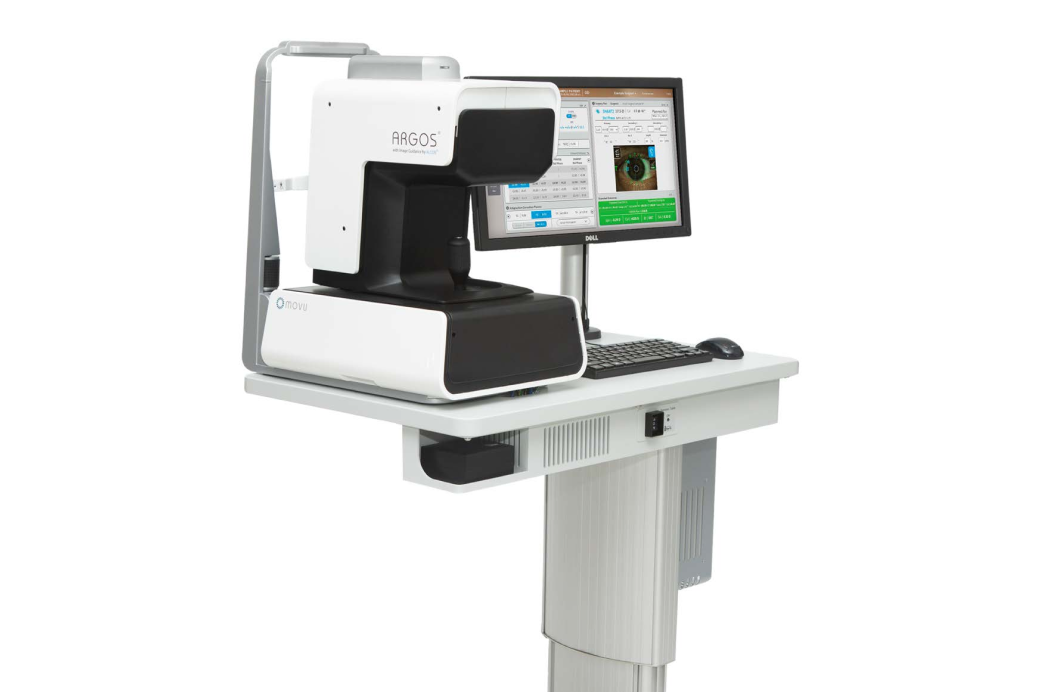
ARGOS is an optical intraocular size measurement device used for preoperative testing of cataract surgery. Not only does it enable faster and more accurate measurements, it also greatly reduces measurement errors. Compared to conventional equipment, the measurement success rate is higher even in cloudy eyes.
centurion vision system
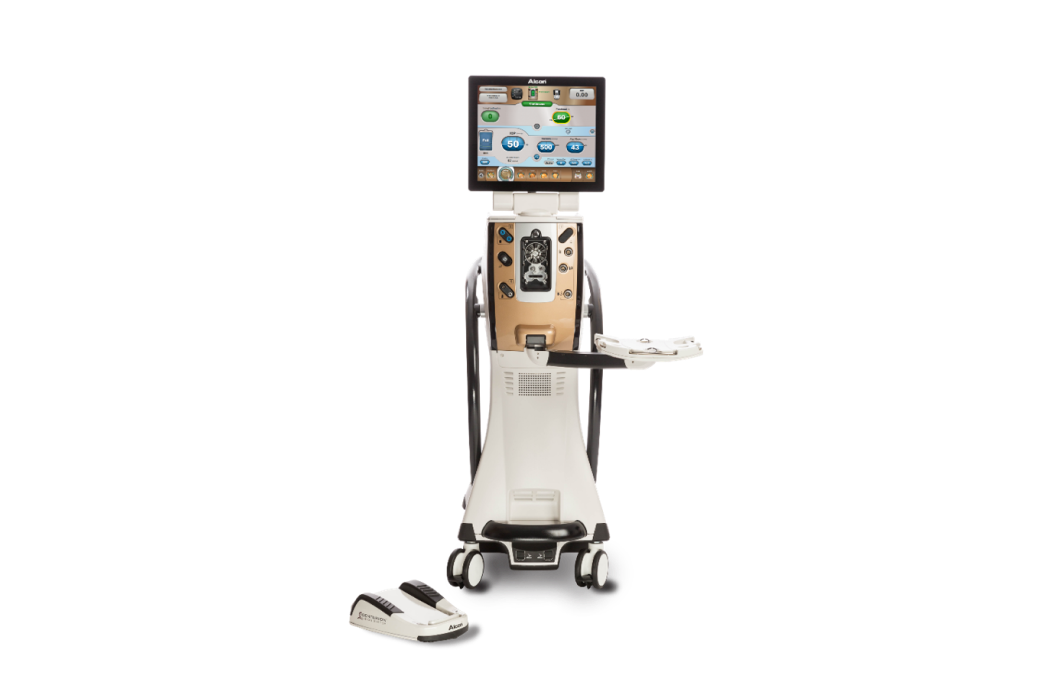
CENTURION VISION SYSTEM is a device used for cataract surgery. Equipped with the industry's first system to reduce intraocular pressure fluctuations and improved lens fragmentation efficiency, it is possible to perform safer and more efficient surgeries.
The LenSx Laser
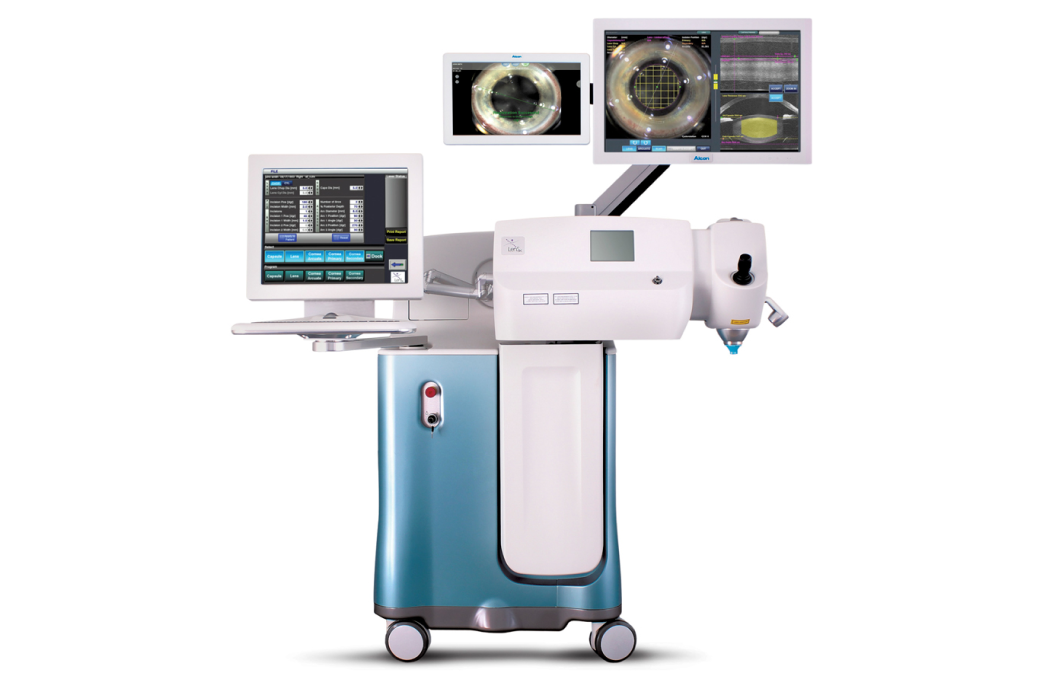
LenSx is a laser surgical device used for cataract surgery. Femtosecond laser and OCT allow for safer and more precise surgery than conventional techniques, and the size and depth of the incision can be adjusted to suit the patient.
※参考(金沢医科大学病院):白内障手術についてご紹介
【東京・池袋】白内障の原因・症状・治療方法・費用・手術の治療に関するよくある質問
Is cataract surgery painful?
There is almost no pain as the eye drops will be anesthetized.
However, you may feel pressured during the treatment.
Can anyone undergo surgery if they wish?
Depending on the shape and condition of your eyes, FLACS treatment may not be possible.
A specialist doctor will conduct a detailed examination beforehand to determine whether the treatment is suitable for you.
I have received LASIK treatment in the past, can I still treat cataracts?
Is possible. We are actively treating patients at our hospital.
Can cataract surgery be performed as a day case?
Yes, it is possible for a day trip.
Is cataract surgery available on weekends?
Cataract surgery is performed on Saturday afternoons.
What are the benefits of cataract surgery FLACS?
・Since the laser handles the process that depends on the skill of the surgeon, safe and accurate treatment results can be expected.
・Because intraocular procedural steps are kept to a minimum, risks during treatment are reduced.
What are the disadvantages of cataract surgery FLACS?
・Because it is a self-pay treatment, it cannot be combined with insurance treatment or selected treatment, and it tends to be expensive.
・Partial redness may remain for several days.
・The total time will be longer because the processes are separated.


![[Multifocal intraocular lens]](https://mieru-mieru.en.m17n.net/wp-content/uploads/cataract-05.jpg)
![[Single vision intraocular lens (near)]](https://mieru-mieru.en.m17n.net/wp-content/uploads/cataract-06.jpg)
![[Single vision intraocular lens (distance)]](https://mieru-mieru.en.m17n.net/wp-content/uploads/cataract-07.jpg)



